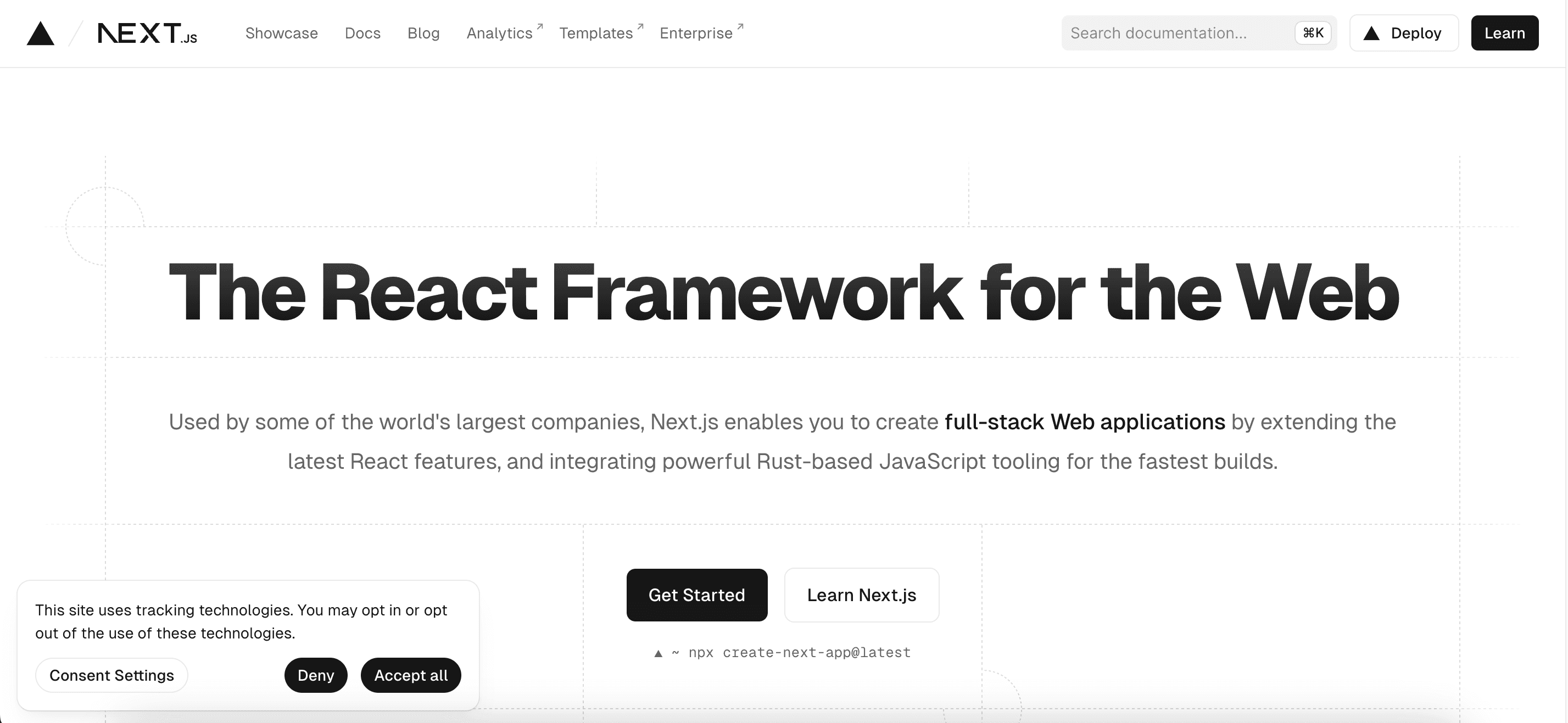Next.js Basic Tutorial: Unveiling the Power of Next.js
- User Experience

Staying up-to-date with the latest technologies is essential to ensure your websites are fast, responsive, and user-friendly. Next.js is a technology that has gained immense popularity in recent years. To simplify your onboarding of Next.js, we created this Next. js basic tutorial.
Join Kapsys as we explore the Next.js basic tutorial and introduce you to all the necessary information to get you going.
What is Next.js?
Before diving into this Next.js basic tutorial, let's begin by understanding what Next.js is and why it's becoming such a prominent player in web development.
Next.js is a popular React framework that simplifies the creation of modern, server-rendered React applications.

It is an open-source framework developed by Vercel and has quickly gained traction in the web development community. Next.js is designed to make it easier for developers to build fast, efficient, and SEO-friendly websites and web applications.
Some key features of Next.js, which you'll explore in this Next.js basic tutorial, include:
Server-Side Rendering (SSR)
With SSR, Next.js can render pages on the server side before sending them to the client's browser. This results in faster page loads and improved SEO, as search engines can easily index server-rendered content.
Routing
Navigation within a web application is a crucial aspect of user experience. Next.js simplifies this process with its built-in routing system. Crafting client-side routes becomes a breeze, allowing you to define routes effortlessly and create dynamic pages without hassle.
Zero configuration
Next.js offers a "zero configuration" setup. You can start with a minimal setup and quickly build your applications. You don't have to worry about complex configuration files.
Automatic code splitting
Efficiency is paramount in web development, and Next.js recognizes this with its automatic code-splitting feature. The framework intelligently breaks down your JavaScript code into smaller, more manageable chunks.
API routes
Web applications often require server-side logic and data fetching. Next.js simplifies this aspect by allowing you to create API endpoints directly within your application. This empowers you to handle server-side operations seamlessly.
Now that you understand Next.js let's start with this Next.js basic tutorial on setting up and creating a simple Next.js application.
Read: Build Powerful Web Applications With Next.js & Strapi
Benefits of Next.js
As part of the Next.js basic tutorial, it's essential to highlight the benefits of adopting Next.js:
SEO-friendly rendering
With server-side rendering and automatic code splitting, your Next.js applications are inherently SEO-friendly, as discussed in the Next.js basic tutorial. This means your content is more discoverable by search engines, resulting in better rankings and increased visibility.
Read: SEO Best Practices In Next.js Applications: Search-Engine Friendly
Enhanced developer experience
As highlighted throughout the Next.js basic tutorial, Next.js offers an enhanced developer experience.
With features like hot module replacement, fast refresh, and a robust ecosystem of plugins and extensions, developers can work efficiently and focus on building great user experiences.
Strong community and resources
Next.js boasts a thriving community and a wealth of educational resources. This means that beginners can easily find tutorials, documentation, and support when learning and working with Next.js.
Prerequisites
One of the crucial aspects of the Next.js basic tutorial is to ensure that you have the following prerequisites. Here's what you need:
Node.js: Next.js is built on Node.js, so install it on your machine.
npm or yarn: You'll need a package manager to install and manage dependencies. npm (Node Package Manager) comes bundled with Node.js, or you can opt for yarn, another popular package manager.
Code Editor: Popular code editors like Visual Studio Code, Sublime Text, or JetBrains WebStorm can significantly enhance your development workflow by providing features like code highlighting, autocompletion, and debugging tools
Next.js Basic Tutorial in Action
The time has come! Whether you're a beginner in web development or looking to explore the capabilities of Next.js, this Next.js basic tutorial is designed to provide you with the knowledge and hands-on experience you need.
Step 1: Create a new Next.js project
To start with Next.js, open your terminal and navigate to the directory where you want to create your project. Run the following command, as part of this Next.js basic tutorial, to create a new Next.js application:
npx create-next-app my-next-appReplace my-next-app with your desired project name. This command will create a new Next.js project with all the necessary files and dependencies.
Read: Getting Started With Next.js To Set Up A New Project
Step 2: Navigate to the project directory
Once the project is created, navigate to the project directory using the cd command:
cd my-next-appStep 3: Start the development server
Now that you're inside the project directory, you can start the development server by running the following command:
npm run dev
If you prefer using yarn, you can use:
yarn dev
This command, a crucial step in this Next.js basic tutorial, will start the Next.js development server, and you'll see the output in your terminal similar to the following:
Ready on http://localhost:3000Your Next.js application is now up and running locally. You can access it by opening your web browser and navigating to http://localhost:3000. You should see a default Next.js homepage.
Step 4: Explore the project structure
Next.js has a well-organized project structure that makes it easy to work with. As part of our Next.js basic tutorial, let's take a quick look at the key directories and files:
pages: This directory is where you'll create your application's pages. Each JavaScript or TypeScript file you make in this directory will become a unique route in your application.
components: This directory is where you can place your React components for reuse throughout your application.
styles: Here, you can store your application's global CSS or other styling solutions.
public: Any static assets like images, fonts, or other files can be placed in this directory.
Step 5: Create your first page
Now, as part of this Next.js basic tutorial, let's create your first page in the Next.js application. In the pages directory, create a new file called index.js.
This file will serve as your application's homepage.
// pages/index.js
import React from 'react';
function HomePage() {
return (
<div>
<h1>Welcome to My Next.js App</h1>
<p>This is a basic Next.js tutorial for beginners.</p>
</div>
);
}
export default HomePage;Save the file, and you should immediately see the changes reflected in your browser at http://localhost:3000.
Step 6: Create additional pages
Next.js makes it easy to create additional pages for your application. Create new files in the pages directory, automatically becoming your application's routes.
For example, if you make a file named about.js, it will be accessible at http://localhost:3000/about.
// pages/about.js
import React from 'react';
function AboutPage() {
return (
<div>
<h1>About Us</h1>
<p>Learn more about our company and mission.</p>
</div>
);
}
export default AboutPage;Step 7: Routing
Next.js provides a built-in routing system that allows you to create links and navigate between pages efficiently. You can use the Link component from next/link to create a link.
// pages/index.js
import React from 'react';
import Link from 'next/link';
function HomePage() {
return (
<div>
<h1>Welcome to My Next.js App</h1>
<p>This is a basic Next.js tutorial for beginners.</p>
<Link href="/about">
<a>About Us</a>
</Link>
</div>
);
}
export default HomePage;In this example, clicking the "About Us" link will navigate the user to the about page.
Read: How To Use Dynamic Routing For Better Scalability In Next.js

Next.js Best Practises
In addition to the Next.js basic tutorial, here are some of the best practices that you should keep in mind while getting started with Next.js:
Follow best practices
As part of the Next.js basic tutorial, adhere to web development best practices such as code organization, modularization, and code readability.
Maintaining a clean and well-structured codebase will make your projects more maintainable.
Optimize for performance
Use tools like Lighthouse, Google PageSpeed Insights, and Web Vitals to analyze your application's performance and identify areas for improvement. Implement techniques like code splitting, lazy loading, and server-side rendering to achieve faster load times and a smoother user experience.
Testing
Writing tests for your Next.js components and functionality is essential for ensuring code reliability. As part of your Next.js basic tutorial, consider using testing libraries like Jest and React Testing Library to create comprehensive test suites.
Deployment
As part of your Next.js basic tutorial, you should choose a reliable hosting platform for your Next.js application. Platforms like Vercel, Netlify, and AWS offer seamless deployment options. Ensure that you configure deployment settings and environment variables correctly.
Environment variables
Safeguard sensitive information using environment variables for secrets, API keys, and configuration settings. Manage your environment variables using .env files and consider using packages like dotenv for added security.
Read: How To Increase The Speed Of The Next.js App

Conclusion
In this Next.js basic tutorial, we've covered the basics of Next.js, including what it is and how to start creating your first Next.js application.
Next.js is a robust framework that simplifies server-rendered React applications, offering features like server-side rendering, automatic code splitting, and easy routing.
As you continue to explore Next.js, you'll discover more advanced features and possibilities for building modern web applications. This Next.js basic tutorial has given you the foundation to explore this exciting technology.
Keep up with Kapsys to learn more about Next.js!


